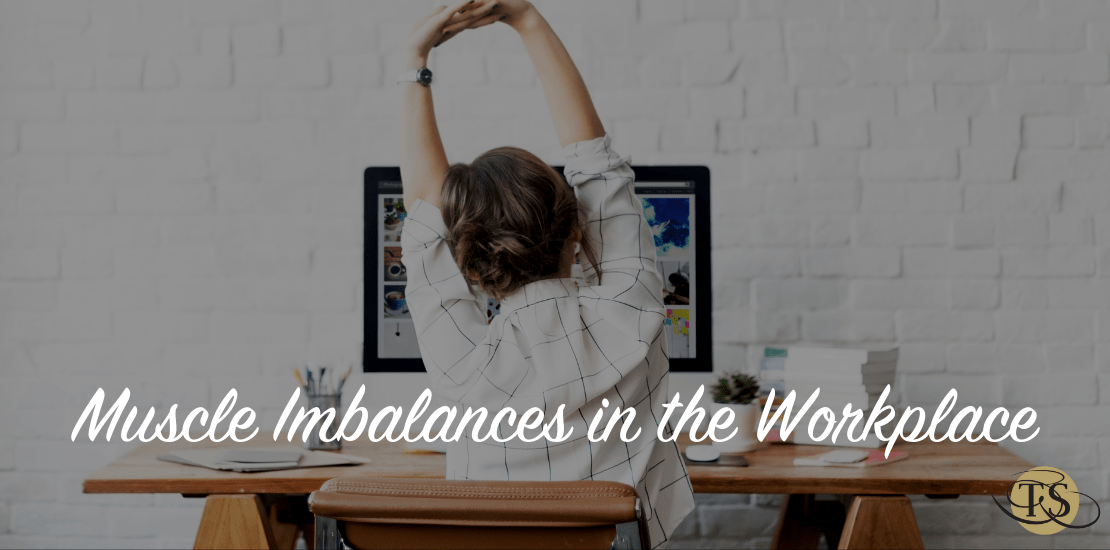Whether you’re a student, truck driver, or work at a computer all day long, the one thing we have in common is sitting for long periods of time. What most people don’t realize is that sedentary lifestyles such as these can negatively impact your body’s health even if you’re active outside of work. Being in a seated position for hours at a time causes muscle imbalances. Muscle imbalance can lead to decreased mobility, pain, unbalanced appearance, and serious injury or reinjury.
Our joints are surrounded by muscles that control our movements. When we overuse one side, certain muscles become stronger, tightened, and more developed while the other side becomes weakened, longer, and less developed. When you are in a seated position, your hips are flexed causing them to be tightened, and your core and glutes are less activated. On top of that, most people forget to pay attention to their posture, causing them to slouch for hours at a time and ultimately leading to back, shoulder, and neck pain.
Poor posture and the pain that comes with it are indications of upper crossed syndrome. Upper crossed syndrome is when the muscles in your back are weakened and lengthened and the muscles in your neck and chest are tightened and shortened. In addition to pain, this can cause frequent headaches.
The most important thing when it comes to muscle imbalance is knowledge. We cannot avoid sitting completely, so we must be educated about our bodies in order to prevent pain and injury. If you have access to a standing desk, utilize it! If you don’t, pay attention to your posture and make it a point to stand up every hour and move for a minute.
Whether you sit at work or not, self-myofascial release (foam rolling) and static stretching are two important things to incorporate into your everyday routine. While performing self-myofascial release, you want to roll on the foam roller until you feel a tender spot and hold for 30 seconds. This helps break up the adhesions in your muscles. You want to hold static stretches for a minimum of 30 seconds as well. This allows the shortened muscle to relax and lengthen. Some of my favorite stretches are: around the clock, lunging hip flexor, 90-90, figure 4, and butterfly.
It is important to remember that you want to stretch the tight, overactive muscles and to activate the lengthened, underactive muscles to keep your body balanced and functioning properly. If you need help identifying your muscle imbalances or have any questions, I’m here to help!
– Leah Johnson, NASM CPT


